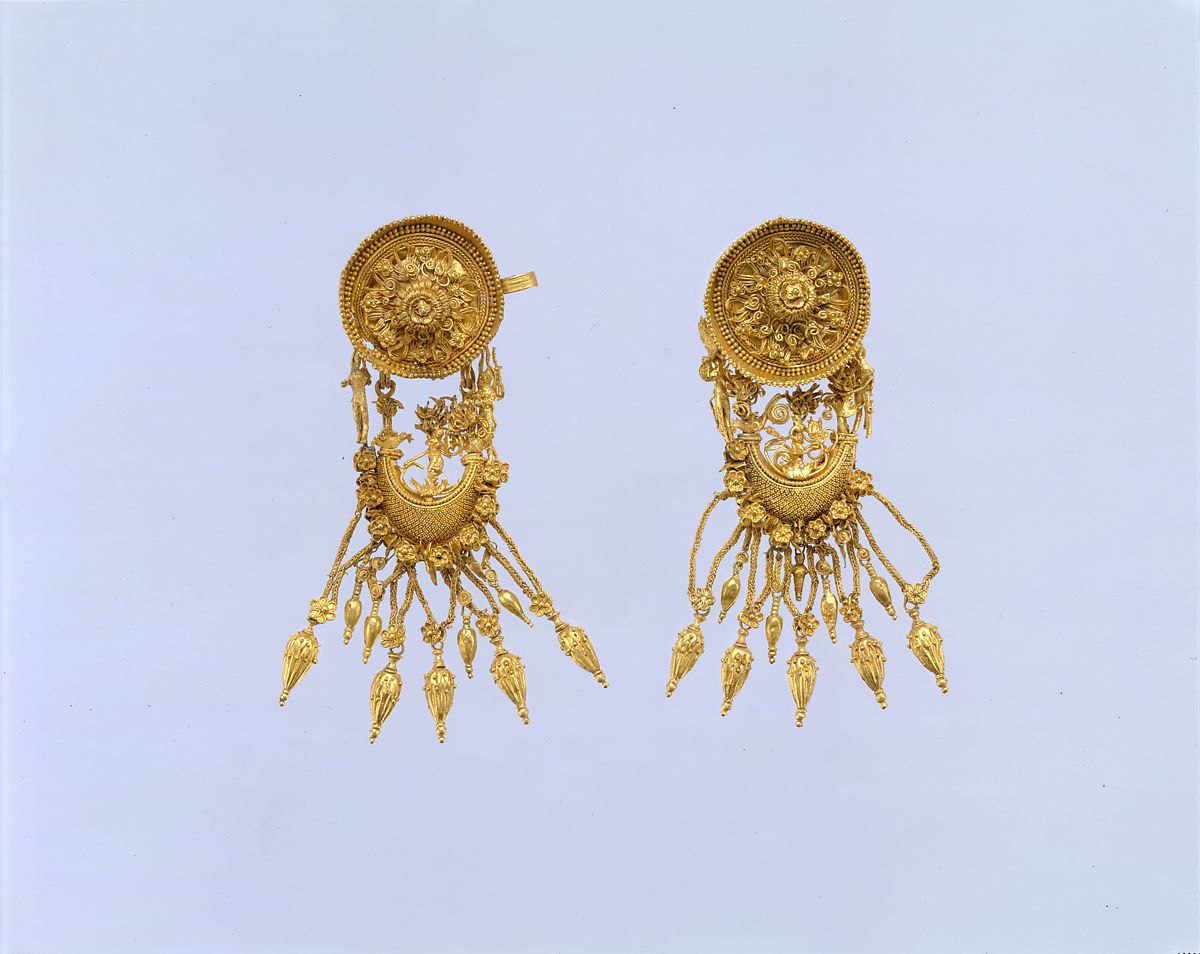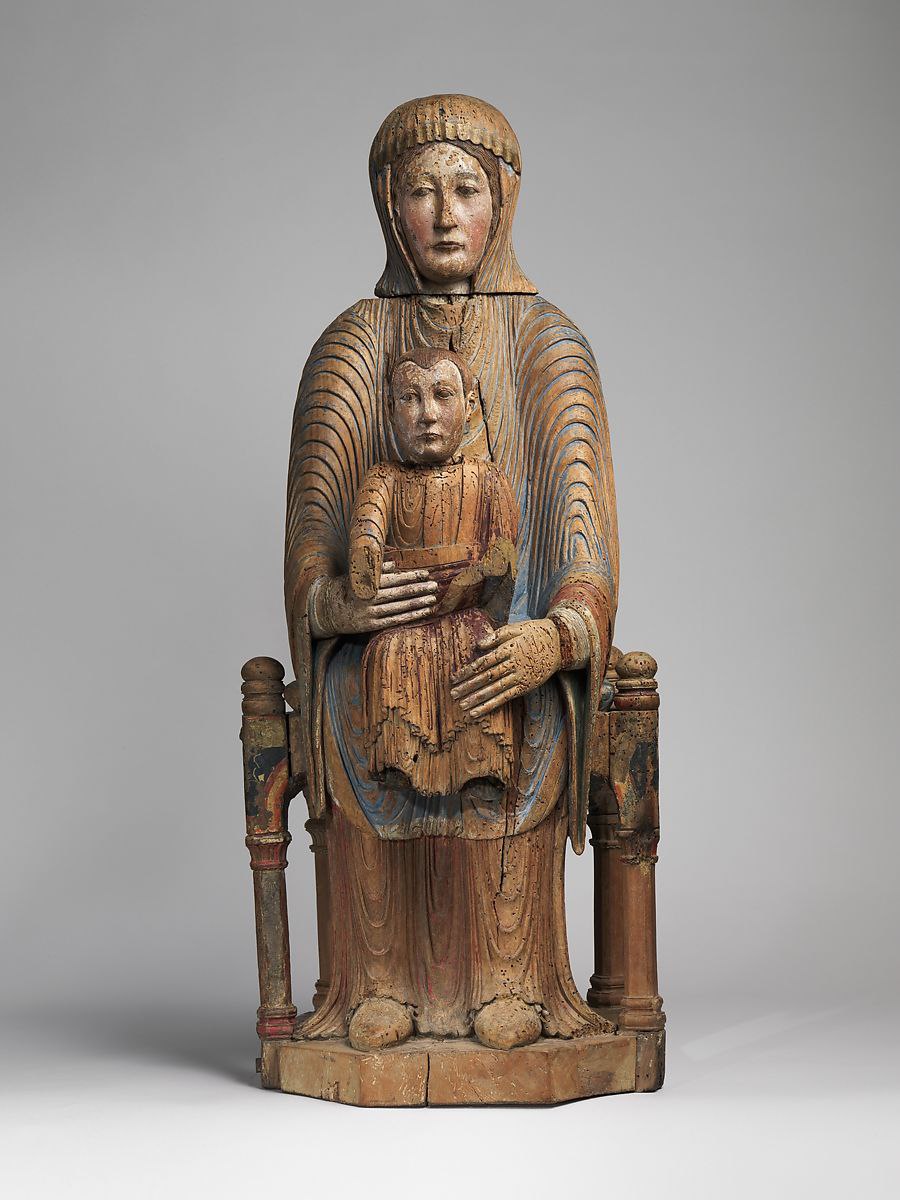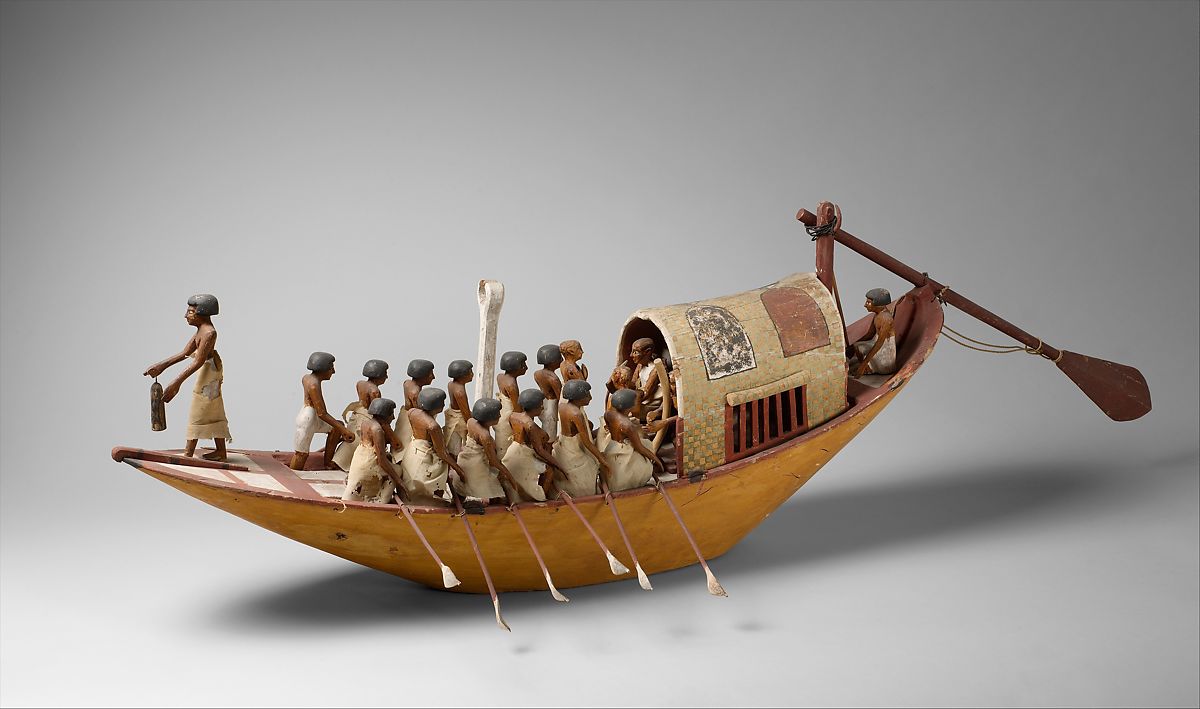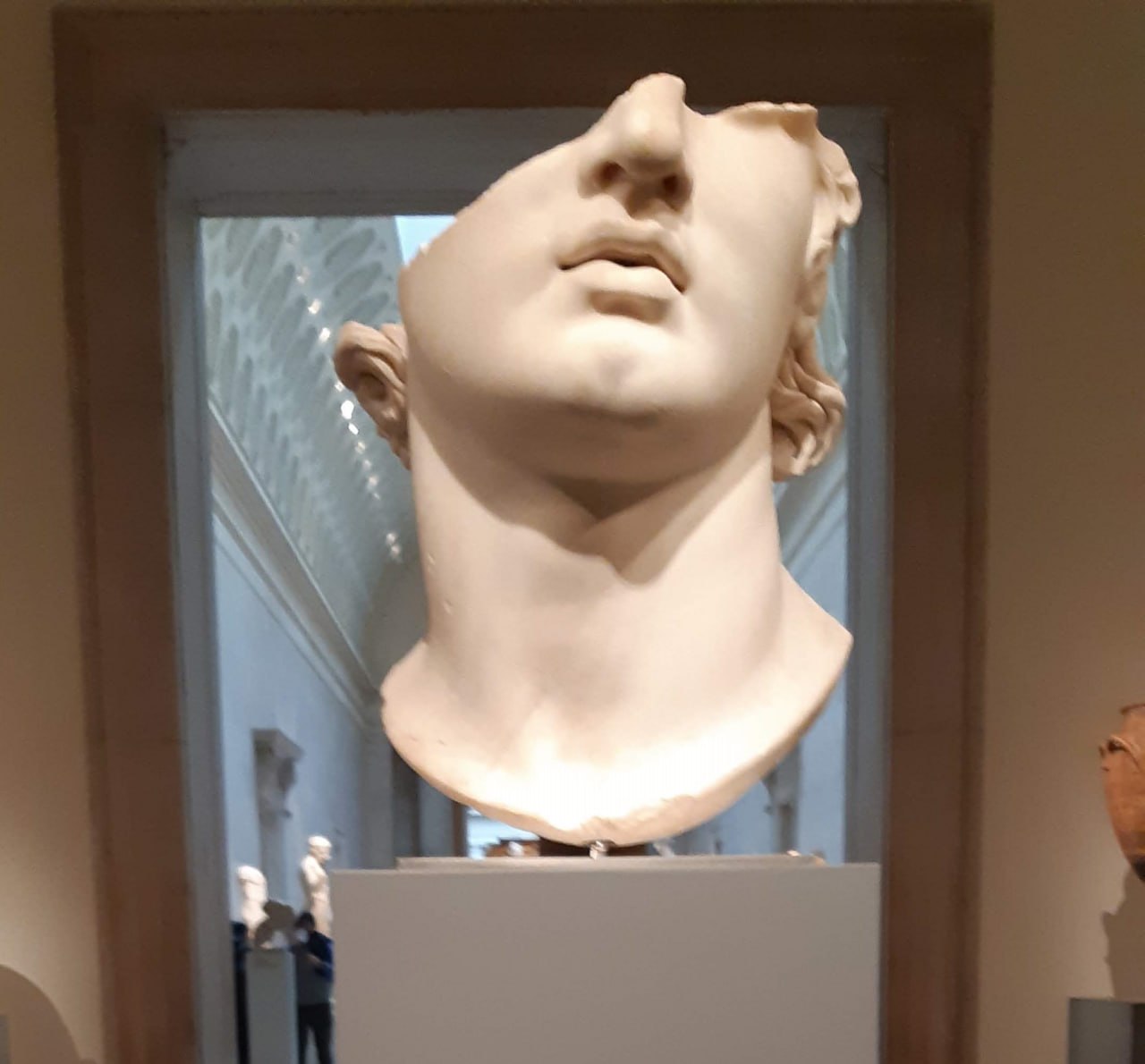Men fight and women beautify the world. And where there is a woman, there is jewelry. Jewelry in Greece reached considerable heights. The country was poor in gold, but it came in exchange for other goods and was always highly valued. Greek art, including jewelry, is considered to be the cradle of European artistic culture. It is characterized primarily by its humanistic outlook, which is confirmed by the predominance of human imagery. In Ancient Greece the main principles of artistic construction were formed and formulated – harmony, rhythm, organicity of idea and form. The Met has an impressive collection of jewelry. And perhaps the largest is the earring collection:
Gold earrings with disc and boat-shaped pendant c. 300 BC. A tiny figure of Nica (the personification of victory) steering two horses is positioned among floral ornaments above the boat-shaped forms on these unusually elaborate earrings.
Spiral gold and copper alloy earring with a lion and griffin head tip 1st half of the 4th century BC. The eyes and rosettes are originally inlaid with colored enamel and the gold treatment is of very high quality. The spirals themselves are made of copper alloy rods coated with a thin sheet of gold.
A gold earring from the middle of the 4th century B.C. From this earring hangs a siren, half bird and half woman, playing the ciphara.
A pair of gold earrings with an Erotes pendant from the 3rd to 1st century B.C.
A gold earring with a sphinx from the 4th-3rd century B.C.
A gold disc earring with a woman’s head and cone pendants. This group of jewelry is said to have been found in a tomb at Maditos. The gold tiara is richly embossed with an intricate floral pattern. Dionysus, the god of wine, and his wife Ariadne sit in the center; muses playing musical instruments sit among the vines and on the sides. A tiny figure of a wort playing a lyre also appears just above the crescent shape on each of the boat-shaped earrings.
Ganymede jewelry c. 330-300 BC.
Items in this group are said to have been found together in Macedonia, near Thessaloniki, before 1913. The collection forms an impressive set – earrings, necklaces, fibulae (pins), bracelets and a ring.
The magnificent gold earrings, dating from about 330-300 B.C., consist of a large palmette of honeysuckle under which hangs an elaborate three-dimensional figure of the Trojan prince Ganymede in the clutches of Zeus, who has taken the form of an eagle. Zeus desired Ganymede for his beauty and took him to Mount Olympus to become the cupbearer of the gods. The pendants are sculptural masterpieces in miniature.
The hoops of the rock crystal bracelets (c. 330-300 B.C.) were carefully carved and polished to give them a twisted appearance, accentuated by wire bindings inserted in the hollows. Artfully executed ram heads.
The toothed gold ring setting is adorned with a beautiful cabochon emerald, but flawed. Emeralds first appeared in jewelry at this time and were probably mined in mines in the eastern Egyptian desert, although it is possible that some were delivered from the Ural Mountains.
A gold armband with the knot of Hercules from the 3rd-2nd century B.C.
The knot of Hercules on this luxurious headband is decorated with floral designs and inlaid with garnets, emeralds and enamel. According to the Roman writer Pliny, the decorative device of the Hercules knot could heal wounds, and its popularity in Hellenistic jewelry suggests that it was believed to have the power to ward off evil.
The golden phiala (libation bowl) from the 4th-3rd centuries BC.
This libation bowl, decorated with bees, acorns and beech nuts, is made by repousse. The decoration with acorns, made at the end of the sixth century BC, must have been traditional.
Jewelry art of ancient Greece
Contact Us

 " alt="Jewelry art of ancient Greece" loading="lazy">
" alt="Jewelry art of ancient Greece" loading="lazy">


